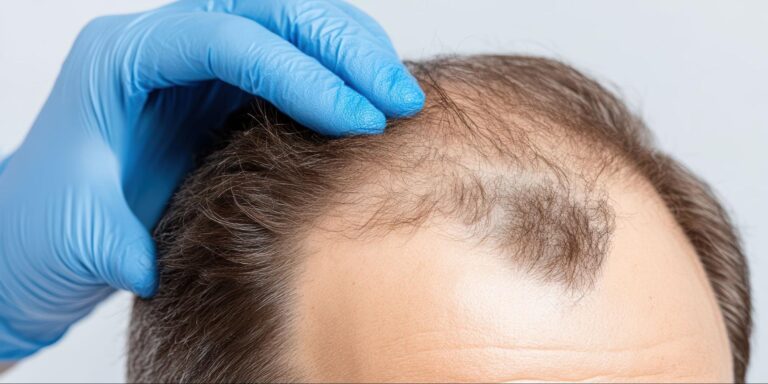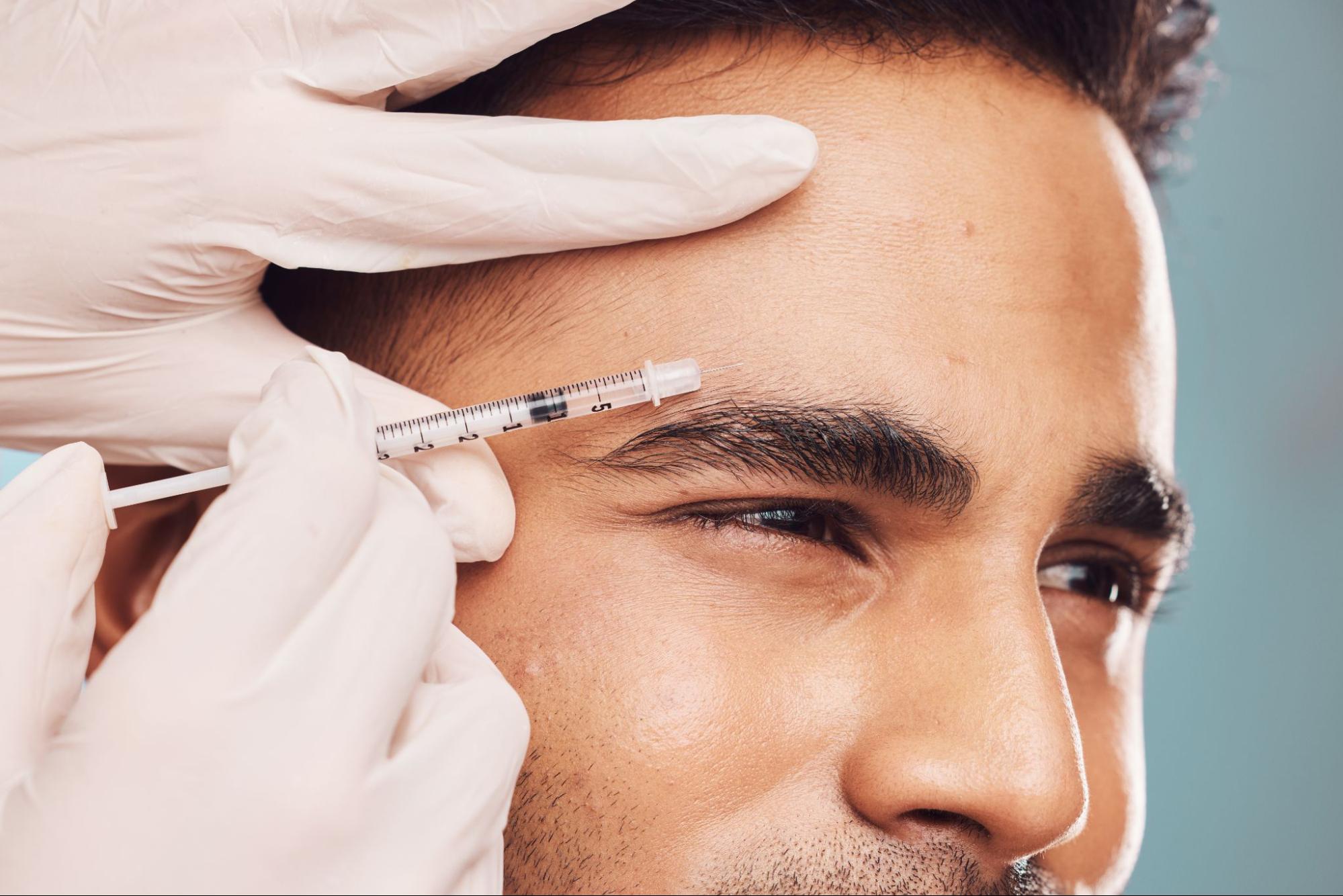Hair loss is a common concern among men, affecting confidence and self-esteem. Advancements in hair restoration offer effective solutions for men of all ages.
Read on to learn the various hair loss treatment options available, their effectiveness across different age groups, and essential considerations for those contemplating treatment.
Effectiveness Across Age Groups
Hair restoration encompasses a range of treatments aimed at combating hair loss and promoting regrowth. These methods include surgical procedures like Follicular Unit Extraction (FUE) and Follicular Unit Transplantation (FUT), non-invasive treatments such as KeraLase, and cosmetic solutions like scalp micropigmentation.
The choice of treatment depends on factors like the extent of hair loss, patient preference, and overall health.
K-Beauty vs. Western Skincare: A Quick Comparison
Hair loss doesn’t discriminate by age—it’s an equal-opportunity confidence thief. But the good news? Hair restoration has evolved into a sophisticated science, offering tailored solutions for men across every stage of life.
Whether you’re just noticing a receding hairline in your twenties or dealing with more advanced thinning in your fifties, there’s a treatment strategy that can work for you.
For Men in Their 20s: Prevention + Preservation
Hair loss at this age often starts subtly—think widening part lines, increased shedding, or the dreaded early-onset receding temples. But here’s what many don’t realize: your hairline isn’t written in stone yet. Because of this, aggressive surgical interventions like hair transplants may be premature.
Instead, this is the decade for smart prevention. Treatments like KeraLase, topical serums, laser therapy, and prescription medications are often the first line of defense. They don’t just slow down hair loss—they create the optimal environment for healthy follicles to thrive. These non-invasive options also help delay the need for surgery while preserving your native hair for longer.
Also important at this stage: lifestyle adjustments. Diet, stress, sleep, and scalp care all play pivotal roles. Think of your 20s as a time to build a strong foundation—so that future treatments (if needed) are more successful.
For Men in Their 30s and 40s: Strategic Restoration
By now, your hair loss pattern is usually well-defined, which means providers can plan more accurately and deliver more impactful results. This is the sweet spot for Follicular Unit Extraction (FUE) or Follicular Unit Transplantation (FUT) if you’re a good candidate.
If you’ve already tried non-surgical methods with limited results, this is often the point where men pivot to restoration that rebuilds—not just preserves.
FUE, the more modern and minimally invasive of the two, involves harvesting individual follicles from the back of the head and implanting them where needed. It delivers natural, refined results with shorter recovery times. For those requiring significant volume, FUT might still be considered.
Men in this age group also benefit significantly from combination therapies. Pairing a surgical procedure with KeraLase, PRP injections, or low-level laser therapy can amplify results, improve density, and accelerate healing.
For Men Over 50: Restoration Isn’t Off the Table
Contrary to outdated assumptions, age alone doesn’t disqualify you from hair restoration. In fact, older men often have a stable hair loss pattern, making them ideal candidates for transplants and non-surgical therapies alike.
What does matter? Your overall health, scalp condition, and availability of donor hair. If those boxes are checked, you can absolutely enjoy a fuller, more youthful hairline—even in your 50s, 60s, or beyond. In fact, many patients over 50 report some of the most dramatic transformations because they’ve lived with hair loss for years and are ready to reclaim their appearance and confidence.
Scalp micropigmentation (SMP) is another standout option here. If you’re not a candidate for transplants or want to avoid downtime, SMP offers the look of fuller density with zero surgery.

Key Considerations in Hair Restoration
Before diving headfirst into any hair restoration journey, there are a few vital truths every man should know. While today’s advancements make restoring hair more accessible than ever, it’s not a one-size-fits-all solution.
The best results stem from personalized care, long-term thinking, and a deep understanding of your unique scalp story:
1. Understanding the Root Cause
Hair loss isn’t always genetic. Yes, male pattern baldness—also known as androgenetic alopecia—is the most common culprit. But stress, nutritional deficiencies, medications, autoimmune conditions, and even scalp inflammation can all play a role.
That’s why a thorough assessment is non-negotiable. The most effective hair restoration plans begin with identifying what’s really causing the loss—not just masking the symptoms.
Clinics like Mason Park Medical Clinic take a full-picture approach by offering diagnostic testing and detailed scalp analysis to uncover hormonal imbalances, nutritional gaps, and underlying health issues that may be accelerating hair thinning.
This isn’t just vanity—it’s biology, and it deserves clinical attention.
2. Timing Is Everything
Early intervention is powerful. The earlier you act, the more follicles can be saved or revived. Waiting until your scalp is significantly visible often limits your options. Hair transplant procedures, while highly effective, depend on healthy donor hair—and that supply is finite.
Acting sooner rather than later means you’ll likely have a wider variety of non-invasive options available, such as KeraLase, PRP, or laser stimulation.
But even for those already experiencing advanced hair loss, it’s never too late to explore solutions. With the right strategy, you can still regain a sense of fullness, shape, and confidence—even if full density isn’t the goal.
3. Set Realistic Expectations
Let’s talk honestly: hair restoration is remarkable, but it’s not magic. Your results will depend on your age, the extent of hair loss, the health of your scalp, and the treatment you choose. Non-surgical methods like KeraLase with LaseMD Ultra™ or platelet-rich plasma (PRP) can trigger natural regrowth but typically require multiple sessions and time to see full results.
Surgical transplants can deliver permanent change—but even then, density varies based on donor supply. Think of hair restoration as a marathon, not a sprint. Results build over time, and maintenance is key. You’re not just restoring hair; you’re making an investment in how you show up to the world, now and years from now.
4. The Power of Customization
No two scalps are the same—and neither are their solutions. Some men may benefit from hairline lowering to soften facial angles. Others might focus on thickening crown density. The most impactful treatments are those that are custom-designed for your goals, hair type, skin tone, and lifestyle.
Top-tier clinics offer combination therapies, not cookie-cutter care. Pairing technologies like microneedling with exosomes, KeraLase, and nutritional support can create exponential improvements in both hair quality and scalp vitality. It’s not just about growth—it’s about better hair.
5. Commitment to Maintenance
Hair restoration isn’t a one-and-done deal. Even after a successful treatment, maintenance is your secret weapon. Think of it like going to the gym: you wouldn’t expect a six-pack from a single workout.
Using doctor-approved topical serums, attending scheduled follow-up appointments, and sticking to recommended scalp hygiene routines will help lock in your results. Ongoing treatments like low-level laser therapy or supplemental therapies keep your follicles healthy and extend the longevity of your investment.
6. Lifestyle Matters More Than You Think
Your daily habits directly affect your scalp’s health and the success of any restoration treatment. Diets low in protein, omega-3s, and essential vitamins can weaken hair growth. Chronic stress increases cortisol, which disrupts hair cycles. Smoking constricts blood flow, literally starving your scalp of oxygen and nutrients.
A successful hair restoration journey involves more than just what’s happening in the clinic—it requires attention to what’s happening in your kitchen, your sleep, and your daily stress levels. Elevating your lifestyle is part of the long game.
7. Choose the Right Provider
This might be the most important factor of all. The quality of your results is directly tied to the expertise of your provider. Look for clinics that specialize in advanced technology and offer personalized, medically-supervised care.
You want a provider who understands the full spectrum of hair loss and offers everything from minimally invasive therapies to full surgical options—not just what’s trendy.
Trust your instincts, ask questions, and don’t be afraid to seek out a second opinion if something doesn’t feel aligned. The right provider will walk you through every detail, from pre-treatment prep to long-term maintenance.

Your Hair. Your Confidence. Your Move.
If you’ve been silently watching your hairline fade or thinning patches grow wider, it’s time to reclaim the narrative. At LUXE Medical Aesthetics in Katy, TX, we don’t believe in cookie-cutter solutions—we believe in precision, personalization, and results.
Whether you’re in your 20s and starting to notice early shedding or in your 50s aiming to restore fullness, our advanced hair restoration options—like KeraLase and beyond—are designed to meet you where you are.
You deserve a treatment plan that aligns with your goals and actually works. Let’s start with a real conversation about your hair, your health, and your confidence. Book your consultation today and experience the science of restoration with the elegance of expertise!





